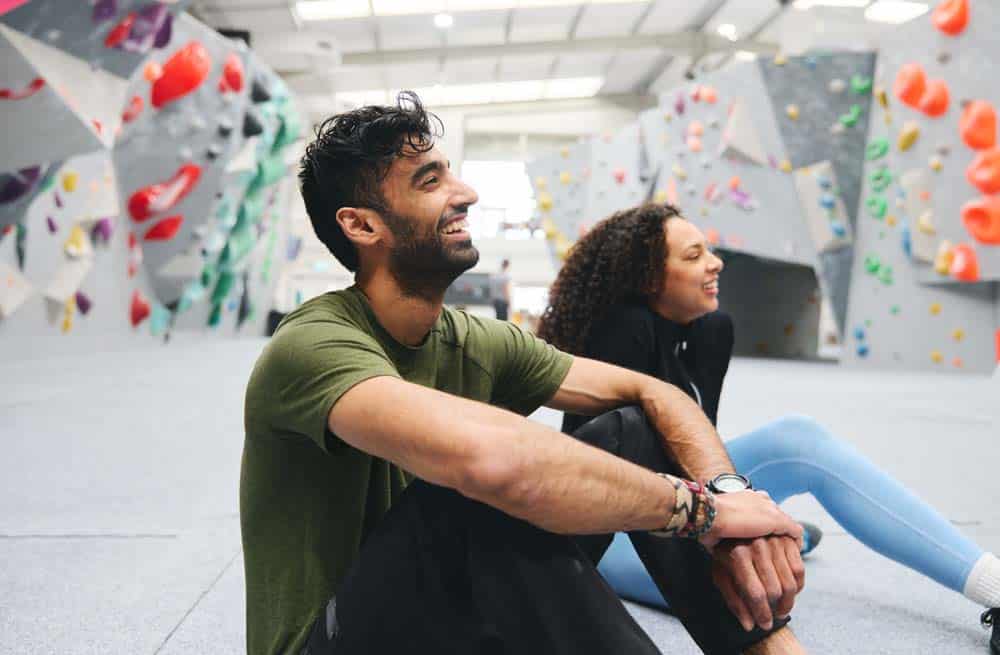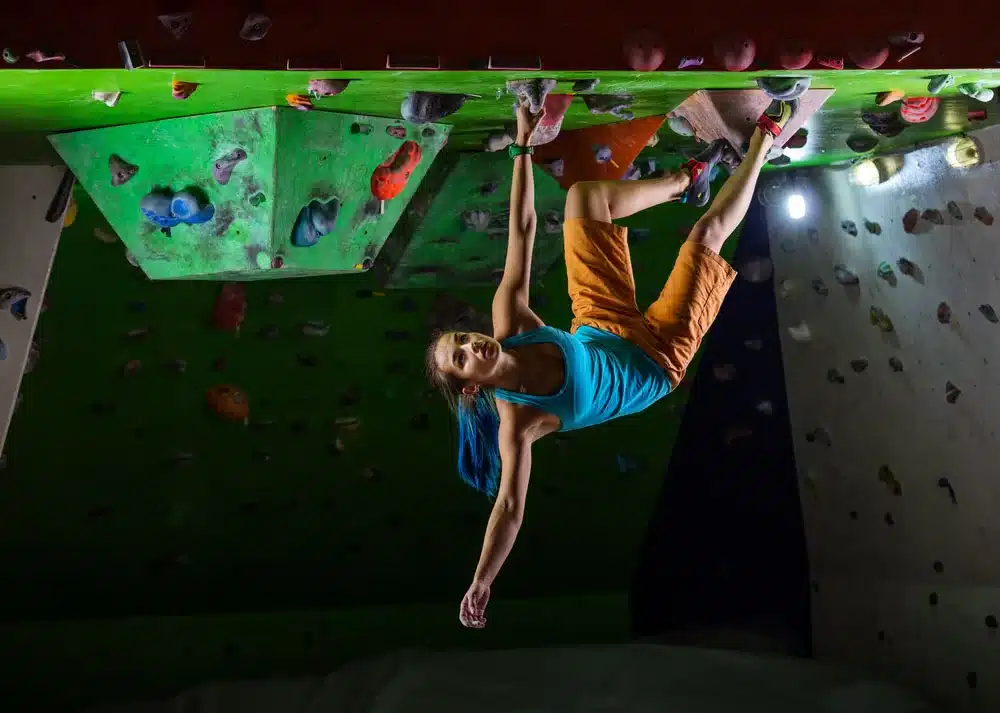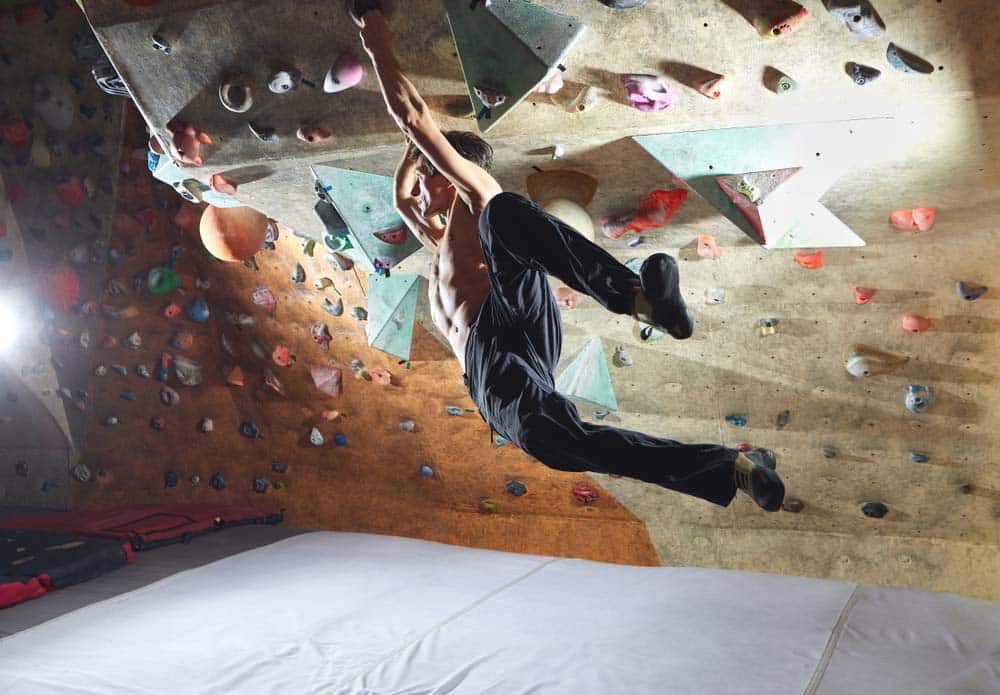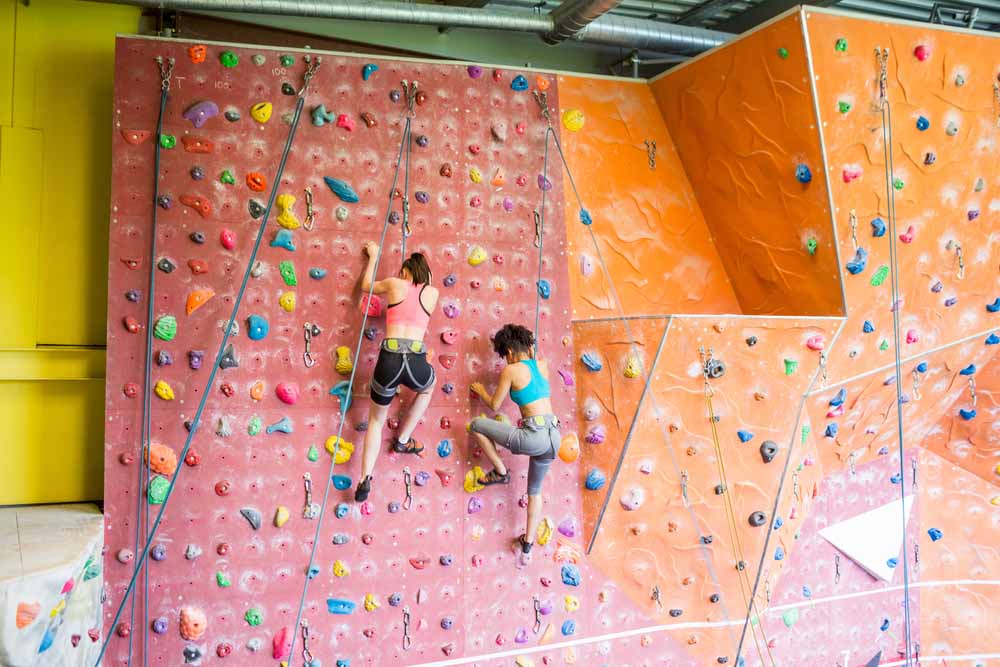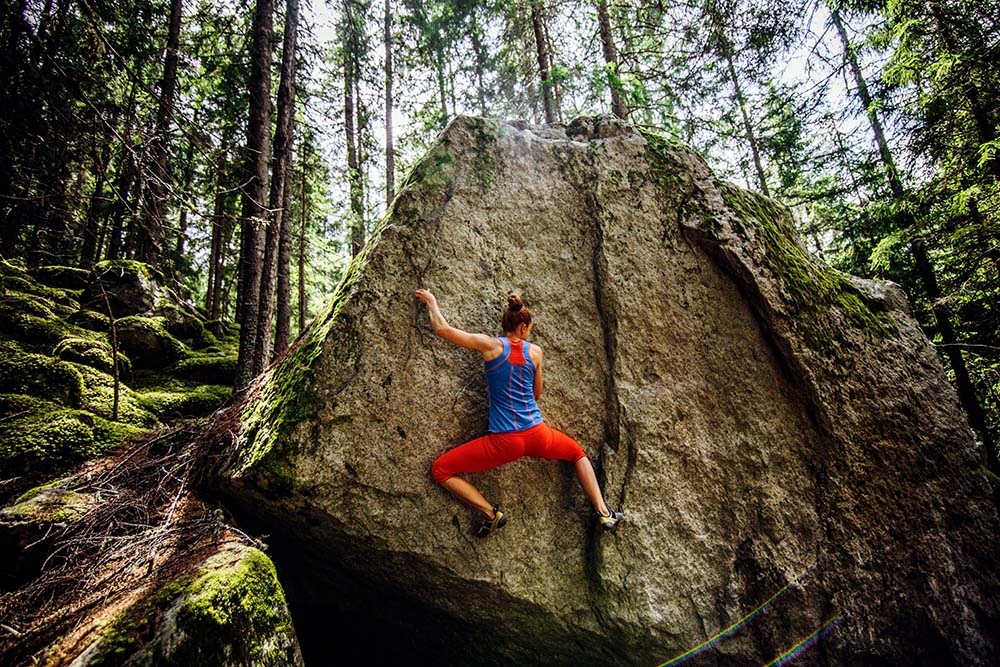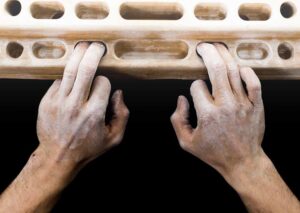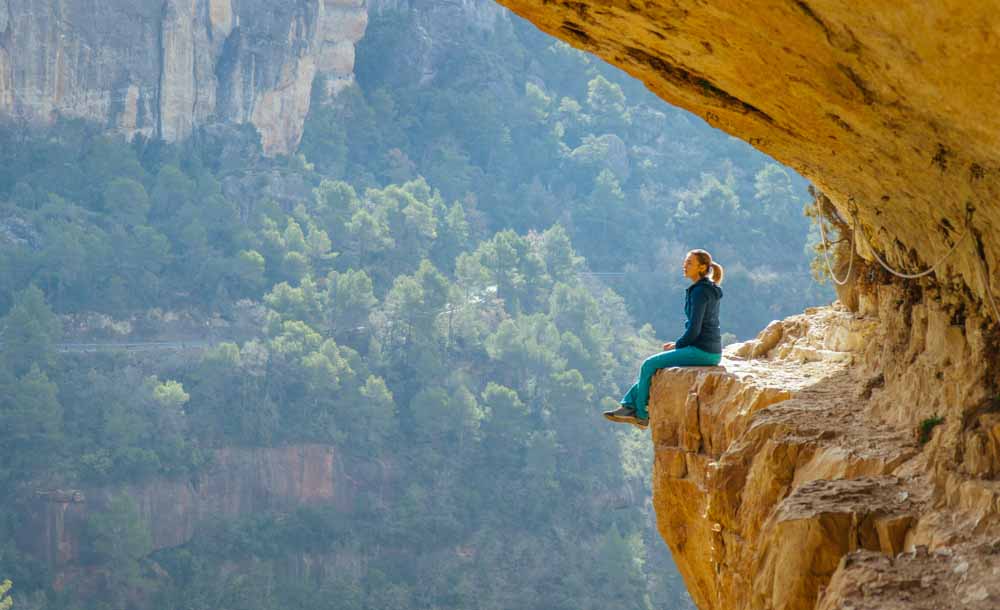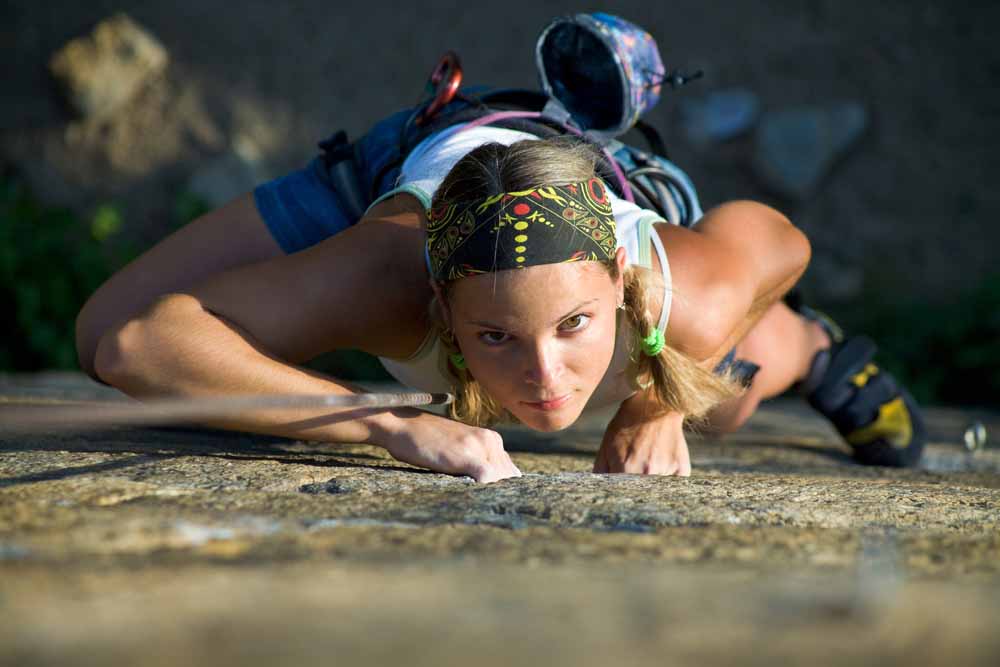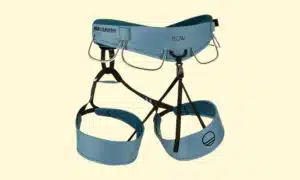Everyone knows that regular exercise is important for health and well-being. However, many people struggle to meet the recommended amount of physical activity.
If you find yourself struggling to motivate to get to the gym or want to try a form of exercise that’s fun and engaging, rock climbing could be a perfect fit.
Many people who start climbing or who are interested in trying it out may wonder: is rock climbing a good way to get the physical activity you need? The answer is a resounding yes. In fact, rock climbing might be the ultimate full-body workout!
Is Climbing for Everyone?
Rock climbing is a fun way to boost physical fitness, and it’s something that most people can try. You don’t have to have a strong upper body to get started! Lots of climbers can’t do a pull-up. Although rock climbing will strengthen your arms and shoulders, you actually use your lower body, especially your feet, more than you might expect.
Climbing is a great way to get exercise, but if you have a pre-existing health condition such as heart problems or injuries from other sports, consult with a doctor before you start climbing.
Muscular Benefits
It’s obvious that you’ll need your upper body to climb, and this is definitely true. But many climbers may not understand the extent to which rock climbing can work a wide variety of muscles, especially as you begin to tackle more difficult climbs.
Your arms and shoulders are a primary way you’ll pull yourself up the wall, but climbing also builds back and core strength. Additionally, good climbers make use of their lower body: pushing with your legs can help you move up the wall more efficiently. Moves like heel hooks and mantles help build muscles in your lower limbs, and climbing slab is a great calf workout.
Muscular Strength
In the fitness realm, people often talk about two types of muscle fitness: strength and endurance. Muscular strength refers to the maximum amount of force your muscles can generate in a given moment.
Rock climbing is a great way to increase your muscular strength. The powerful movements needed to climb stress your muscles, and they respond to this stimulus by becoming stronger and increasing their capacity to generate force.
Research has shown that consistently rock climbing for three months leads to significant improvement in upper body strength as well as in the strength of the core muscles.
Rock climbing is extra effective in terms of increasing your strength because the movement is varied and requires multiple muscle groups. Doing a pull up will definitely make you stronger, but it’s a relatively simple exercise that mainly targets your shoulders.
When you climb, each move you do recruits a wide variety of muscles, from your lats to your biceps to your back muscles. And since each move is different, you’ll use slightly different muscles each time. Complex movements are more effective at building strength than simple, repetitive motions.
Another reason rock climbing is so effective for muscle building is that many of the movements tend to be dynamic, especially if you’re participating in indoor rock climbing. Climbs that are set in climbing gyms often have moves that require you to jump or grab a hold dynamically. This type of movement is great for recruiting muscle force!
Muscular Endurance
Your muscles will get more powerful from climbing, but their endurance will also increase. Muscular endurance refers to your muscles’ capacity to perform for an extended period of time. Regardless of what type of rock climbing you do, your muscular endurance will definitely increase.
The first time you go to the climbing gym, you might notice that you can only climb for 30 minutes or so before your pulling muscles are exhausted and your grip strength is shot. However, after you’ve been climbing for a few months you’ll probably notice that you can stay at the gym for much longer.
This is because your muscular endurance is increasing! People often do exercises like push ups to work on this capacity of fitness, but spending time at the climbing gym can be just as effective. Top rope or lead climbing is great for increasing your endurance, because you’re climbing for a longer period of time. However, even bouldering will increase your muscular endurance, since you’re doing a series of hard moves. Plus, doing multiple boulders within a climbing session increases your stamina.
Cardiovascular Benefits
Many people assume that the way to build cardiovascular fitness is by running or cycling. These types of exercise are definitely effective, but climbing is a surprisingly good cardio workout too.
Cardiovascular fitness, which is also called aerobic capacity, refers to the ability of your heart and lungs to deliver oxygen to your body as you perform sustained exercise. Muscles need oxygen to work, so when you’re doing an activity such as running, you start to breath harder and your heart rate increases as you take in more oxygen and pump it to your muscles.
Rock climbing may seem like a strength-based sport, but research shows that it also leads to increased cardiovascular fitness. When you climb, you spend an extended period of time with an elevated heart rate and increased breathing, which boosts your aerobic capacity.
If you want to focus on cardio fitness, spend some time sport climbing. This way, you’ll spend longer on the wall than you would if you were bouldering.
Flexibility and Balance
In addition to building strength and cardiovascular capacity, rock climbing is an effective way to improve your balance and flexibility. When you hit the climbing gym, you’ll probably find yourself getting into unusual and challenging body positions. This increases your flexibility and mobility, which is important for staying healthy and preventing injury.
Research has also shown that rock climbing increases your balance. This is especially important as you age, as having good balance helps prevents falls and injuries while you carry out daily activities.
Effects of Different Styles of Climbing
Although all rock climbing is a great workout, what style of climbing you choose to do will effect what specific physical benefits you get.
Indoor rock climbing has different physical fitness benefits than outdoor climbing. Indoor climbing, especially competitive climbing, tends to be very dynamic and powerful. It often requires a lot of lower body strength, as you’ll push off with your legs to reach the next hold.
Outdoor climbing can use your legs too, but a lot of climbs outside are less dynamic and rely more on finger strength, balance, and general muscle strength. It also depends where you climb! For example, a place like the Red River Gorge will build your muscular endurance, as many of the routes are long and pumpy. In contrast, climbing in a place like Joshua Tree National Park will significantly improve your footwork and technique.
The angle of the wall also effects which parts of your body will be targeted. Overhanging climbing requires a lot of core strength, and it’s also challenging for your shoulders and arms. You’ll find yourself pulling quite a bit when you’re on a steep wall, and your hamstrings will likely also get stronger as you use your feet to heel hook holds.
Can Climbing be Your Only Form of Exercise?
If you love rock climbing, you may find that you don’t want to do anything else! Can hitting the climbing gym a few times a week be the only way you workout?
You can be very physically fit, both muscularly and cardiovascularly, from climbing alone. However, this scenario can lead to muscle imbalances, which can then cause injuries. For example, climbing requires upper body power, and your shoulders will get stronger from the sport. However, many climbers have underdeveloped rotator cuff muscles. Constantly using the shoulders when the rotator cuffs are weak can lead to shoulder dislocation or instability.
To prevent injury, it’s important to climb with good technique. Make sure to keep your arms straight as your climb. This will make your climbing more efficient, but it also helps you stay healthy. Climbing in a “chicken-wing” position is common in beginners, but it can lead to injuries in the fingers or wrist flexors.
Another important technique tip for preventing injury is to focus on your feet as much as possible. A common mistake that beginner climbers make is to overuse their upper body. This can lead to injuries such as climber’s elbow. To avoid this, try to use stand on your feet as much as possible. This will take some weight off of your arms and help you climb efficiently, thus increasing your climbing performance.
To prevent injury so you can continue to gain the physical and mental benefits of rock climbing, you can do specific body weight or resistance band exercises. Try incorporating the following exercises into your training schedule.
-
Is, Ys, and Ts:
-
To maintain stability and strength in your shoulders, try doing Is, Ys, and Ts with a resistance band. To perform this exercise, hold the resistance band in both hands. Keep your left hand by your hip and raise your right hand up perpendicular to your body until it’s all the way overhead, keeping your arm straight. This is the “I” position. For the “T” position, perform the same motion, but the arm moves parallel to your body. For the “Y” position, the arm you are raising should be at a 45 degree angle from your body. Perform three sets of each position on each side, with a resistance band that feels challenging.
-
-
Hamstring curls
-
Injuries in the arms and upper body are more common in rock climbing, but hamstring injuries are also relatively common. Heel hooks are a common move in rock climbing, but if you perform an aggressive heel hook without the necessary strength, you could strain or tear your hamstring. To ensure your body is ready to heel hook, strengthen your hamstrings by placing your heels on an exercise ball in a bridge position. Extend your legs, then contract them again. If this is too easy, do one leg at a time. Start with three sets of ten.
-
-
Wrist extensor eccentrics
-
This exercise requires a light dumbbell. Hold your arm at 90 degrees with your palm down and a dumbbell in your hand. Lift your hand up so the wrist is bent as far back as possible, then lower down slowly as far as you can. Perform three sets of ten on each side. This exercise helps prevent climber’s elbow. Remember to climb with arms straight whenever you can!
-
Climbing has Benefits Beyond Exercise
Climbing has obvious physical benefits, but you may be surprised that as your body gets stronger and your climbing performance improves, you begin to notice other benefits too. Just like other forms of exercise, rock climbing has mental health benefits and has been shown to reduce symptoms of depression.
Many climbers also find that spending time working out beta for different climbs has benefits for their decision making and problem solving abilities. It’s even been shown to improve working memory capacity! Climbing can also help you deal with fear: the sport can be scary, but doing it in a safe environment like a gym can boost your confidence.
The climbing community is also a huge part of why many people climb. The sport is challenging, and experiencing this challenge with others creates a strong bond. Climbers have a shared passion and connection often comes quickly! This is true for every level of climbing– it’s not just elite athletes that are a part of the climbing community.
Conclusion
You don’t need a personal trainer to get your body into good shape!
Rock climbing is a great full body workout that can be done at a rock climbing gym or outdoors.
This challenging sport will boost your physical fitness, and strengthen everything from your arms to your lower body to your abs. Plus, the elevated heart rate you’ll experience when you climb will boost your aerobic capacity.
Beyond the fitness benefits, climbing is awesome for your social and emotional health.


